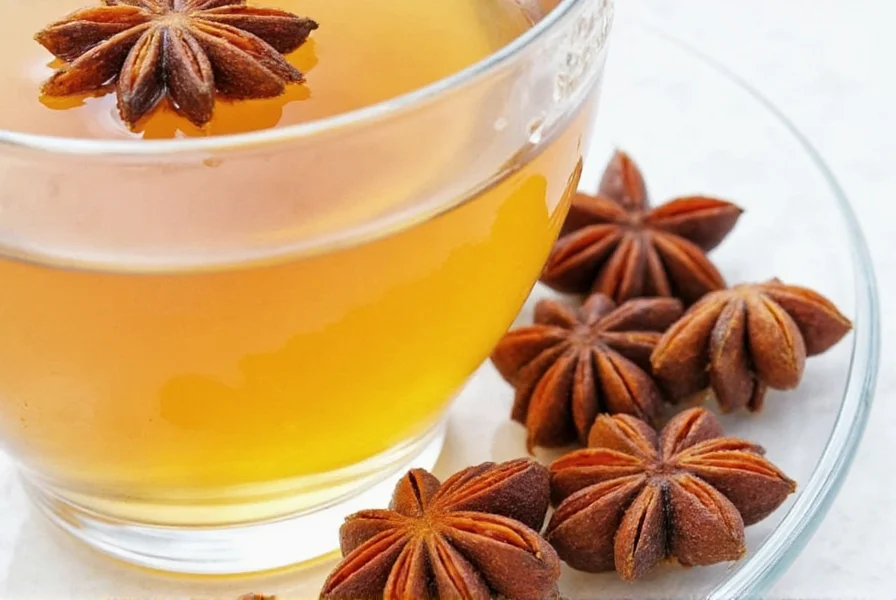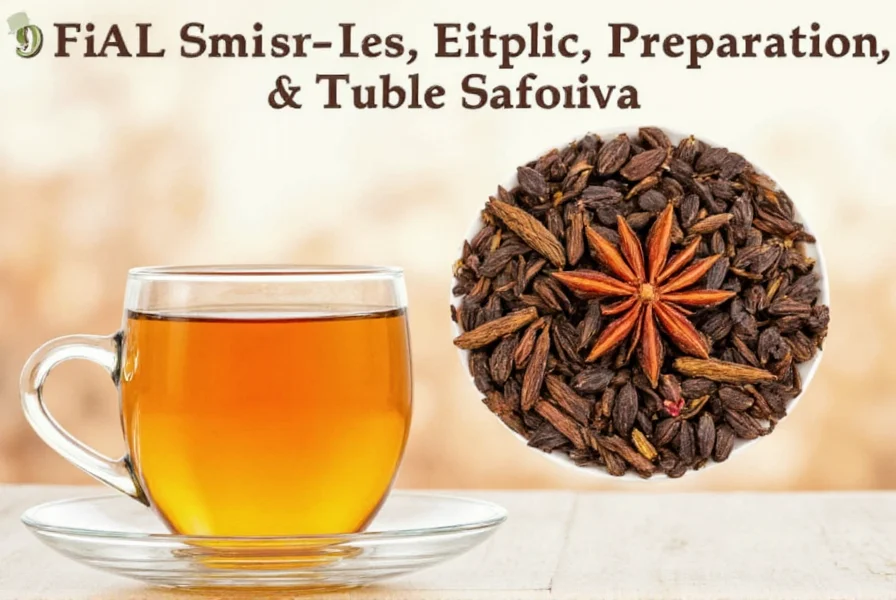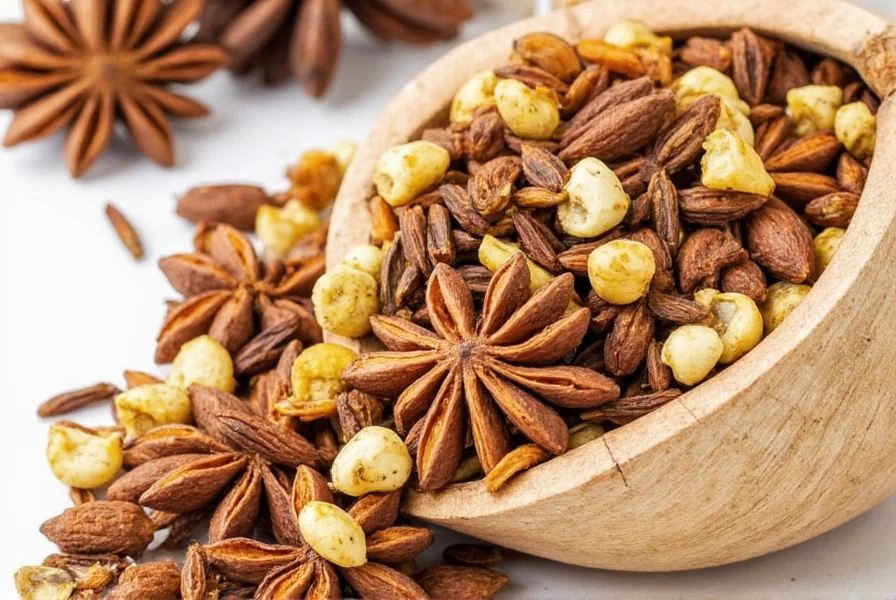Star anise tea has been used for centuries in traditional Chinese medicine and culinary practices across Asia. Unlike common anise seed (which comes from a completely different plant in the parsley family), star anise belongs to the magnolia family and delivers a more intense, complex flavor profile with subtle spicy notes alongside its characteristic licorice taste.
Understanding Star Anise: Botanical Background
The Illicium verum tree produces distinctive eight-pointed star-shaped fruits that range from brown to rust-colored when mature. Each point of the star contains a single seed, though the entire pod is typically used for tea preparation. This evergreen tree thrives in subtropical climates and requires specific growing conditions that limit commercial cultivation primarily to China, Vietnam, and parts of India.

Star Anise Tea vs. Anise Seed Tea: Clearing the Confusion
Many consumers mistakenly believe star anise and anise seed are the same product. This common confusion stems from their similar flavor profiles, but they come from entirely different botanical sources:
| Characteristic | Star Anise | Anise Seed |
|---|---|---|
| Botanical Source | Illicium verum (magnolia family) | Pimpinella anisum (parsley family) |
| Appearance | 8-pointed star-shaped pods | Small oval seeds |
| Flavor Profile | Intense licorice with subtle spice | Milder, sweeter licorice |
| Primary Growing Regions | China, Vietnam | Mediterranean, Middle East |
Evidence-Based Health Benefits of Star Anise Tea
While traditional medicine systems have long utilized star anise, modern research provides some scientific backing for certain health benefits:
- Digestive support: The compound anethole may help relax gastrointestinal muscles and reduce bloating. A 2020 study in the Journal of Ethnopharmacology noted potential anti-spasmodic effects.
- Antioxidant properties: Star anise contains shikimic acid and other polyphenols that demonstrate antioxidant activity in laboratory studies.
- Respiratory relief: Traditional use for coughs and congestion may relate to its expectorant properties, though clinical evidence remains limited.
- Antimicrobial effects: Some research suggests star anise extracts may inhibit certain bacteria and fungi, though these effects haven't been conclusively demonstrated in tea form.
It's important to note that most research on star anise benefits has been conducted in laboratory settings or with concentrated extracts, not with typical tea preparations. Consuming star anise tea as part of a balanced diet may offer modest benefits, but it shouldn't replace medical treatment for health conditions.
Authentic Preparation Methods for Star Anise Tea
Creating a flavorful cup of star anise tea requires proper technique to extract maximum flavor without bitterness:
- Use one whole star anise pod per 8 ounces of water
- Bring filtered water to just below boiling (approximately 200°F or 93°C)
- Place the star anise in your teapot or infuser
- Pour hot water over the spice and cover
- Steep for 7-10 minutes (longer steeping increases intensity but may create bitterness)
- Remove the star anise pod before serving
- Optional additions: A slice of fresh ginger, a cinnamon stick, or a small amount of honey can complement the flavor
For a more complex flavor profile, many traditional Chinese preparations combine star anise with other warming spices like cloves and cinnamon in what's known as "five-spice tea." This combination creates a more balanced flavor while potentially enhancing the tea's digestive benefits.

Safety Considerations and Potential Side Effects
While generally recognized as safe when consumed in culinary amounts, star anise tea requires some important safety considerations:
- Japanese star anise warning: Never consume Japanese star anise (Illicium anisatum), which is highly toxic and can cause severe neurological symptoms. Always purchase from reputable sources that sell only Chinese star anise (Illicium verum).
- Pregnancy concerns: Due to potential uterine stimulation effects, pregnant women should avoid consuming large quantities of star anise tea. Consult your healthcare provider before regular consumption.
- Allergy considerations: Those with known sensitivities to plants in the magnolia family may experience allergic reactions.
- Medication interactions: Star anise may interact with certain medications metabolized by the liver. Consult your doctor if taking prescription medications.
As with any herbal preparation, moderation is key. Most experts recommend limiting consumption to 1-2 cups per day to avoid potential side effects while still enjoying the tea's distinctive flavor and potential benefits.
When Star Anise Tea Isn't Appropriate
Certain populations should exercise particular caution or avoid star anise tea entirely:
- Infants and very young children due to potential neurological effects
- Individuals with estrogen-sensitive conditions, as some compounds may have mild estrogenic effects
- People with known liver conditions, as high consumption may affect liver enzymes
- Those scheduled for surgery within two weeks, due to potential effects on blood sugar regulation
Always consult with a qualified healthcare provider before using star anise tea therapeutically, especially if you have underlying health conditions or take prescription medications. Herbal remedies should complement—not replace—conventional medical care.
Frequently Asked Questions About Star Anise Tea
What does star anise tea taste like?
Star anise tea has a distinctive sweet licorice flavor with subtle spicy undertones and a warm, complex profile. Unlike anise seed tea, it offers a more intense flavor with hints of cinnamon and clove. The taste is stronger than common anise seed, so many people prefer to blend it with other teas or add honey to balance the intensity.
How often can I safely drink star anise tea?
For most healthy adults, consuming 1-2 cups of star anise tea per day is considered safe. Excessive consumption (more than 3-4 cups daily) may lead to potential side effects due to the concentrated compounds. It's advisable to take periodic breaks from regular consumption and consult with a healthcare provider if you have specific health concerns or are taking medications.
Can star anise tea help with digestion?
Traditional medicine systems have long used star anise tea to support digestion, and modern research suggests potential mechanisms. The compound anethole may help relax gastrointestinal muscles and reduce bloating. Many people find drinking a cup of star anise tea after meals helps alleviate mild digestive discomfort, though scientific evidence for significant therapeutic effects is limited. For persistent digestive issues, consult a healthcare professional.
Is star anise tea safe during pregnancy?
Pregnant women should exercise caution with star anise tea. While occasional small amounts are likely safe, regular or large consumption isn't recommended due to potential compounds that may stimulate uterine activity. Some traditional medicine systems actually use star anise to promote menstruation, which is why healthcare providers typically advise pregnant women to avoid regular consumption. Always consult your obstetrician or midwife before including star anise tea in your pregnancy diet.
How should I store star anise for tea?
To maintain maximum flavor and potency, store whole star anise pods in an airtight container away from light, heat, and moisture. A dark cupboard or pantry works well. Properly stored, star anise retains its flavor for 1-2 years. Avoid storing in the refrigerator due to humidity concerns. For longest shelf life, keep the pods intact rather than crushing them until ready to use, as this preserves the essential oils that provide the distinctive flavor.











 浙公网安备
33010002000092号
浙公网安备
33010002000092号 浙B2-20120091-4
浙B2-20120091-4